
Brigham Young University (BYU) is a private research university in Provo, Utah, United States. It was founded in 1875 by religious leader Brigham Young and is sponsored by the Church of Jesus Christ of Latter-day Saints.

Rex Edwin Lee was an American lawyer and academic who served as the 37th solicitor general of the United States from 1981 to 1985. He was responsible for bringing the solicitor general's office to the center of U.S. legal policymaking. During his tenure, Lee argued 59 cases before the U.S. Supreme Court.
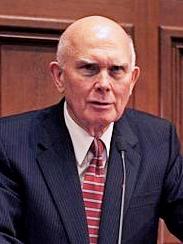
Dallin Harris Oaks is an American religious leader and former jurist and academic who since 2018 has been the first counselor in the First Presidency of the Church of Jesus Christ of Latter-day Saints. He was called as a member of the church's Quorum of the Twelve Apostles in 1984. Currently, he is the second most senior apostle by years of service and is the President of the Quorum of the Twelve Apostles.

Brigham Young University–Hawaii (BYU–Hawaii) is a private college in Laie, Hawaii, United States. It is owned and operated by the Church of Jesus Christ of Latter-day Saints. BYU–Hawaii was founded in 1955 and it became a satellite campus of Brigham Young University (BYU) in 1974. In 2004, it was made a separate institution. The college's sole focus is on undergraduate education.
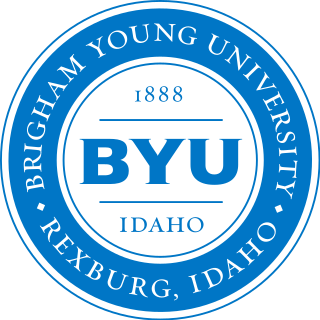
Brigham Young University–Idaho is a private college in Rexburg, Idaho. Founded 136 years ago in 1888, the college is owned and operated by the Church of Jesus Christ of Latter-day Saints. Previously known as Ricks College, it transitioned from a junior college to a baccalaureate institution in 2001.
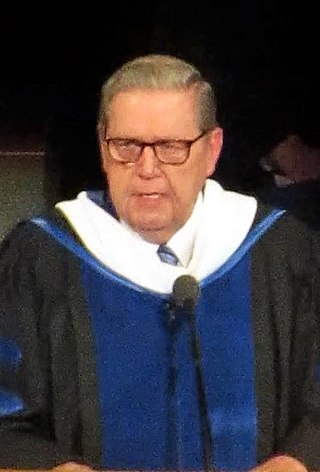
Jeffrey Roy Holland is an American educator and religious leader. He served as the ninth president of Brigham Young University (BYU) and is the acting president of the Quorum of the Twelve Apostles of the Church of Jesus Christ of Latter-day Saints. As a member of the Quorum of the Twelve, Holland is accepted by the church as a prophet, seer, and revelator. Currently, he is the third most senior apostle in the church.
The Marriott School of Business is the business school of Brigham Young University (BYU), a private university owned by the Church of Jesus Christ of Latter-day Saints and located in Provo, Utah, United States. It was founded in 1891 and renamed in 1988 after J. Willard Marriott, founder of Marriott International, and his wife Alice following their $15 million endowment gift to the school.

Howard Stevenson McDonald was an American university administrator, and president of Brigham Young University and California State University, Los Angeles.

Franklin Stewart Harris was president of Brigham Young University (BYU) from July 1921 until June 1945, and president of Utah State University from 1945 to 1950. His administration was the longest in BYU history and saw the granting of the first master's degrees. Under his administration the school became an accredited university. He set up several colleges, such as the College of Fine and Performing Arts with Gerrit De Jong as the founding dean. Harris was an agricultural scientist, holding a doctorate in agronomy from Cornell University. He had served as the agriculture department head and head of the experiment station at Utah State Agricultural College and left BYU to become president of that institution. Harris also traveled to Russia and to Iran and other parts of the Middle East in order to provide expert advice on agriculture issues. The Harris Fine Arts Center on BYU's Provo campus was named after him.
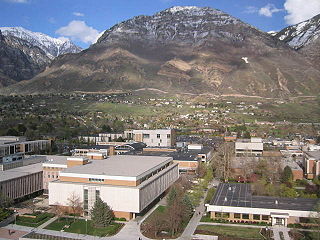
Y Mountain is a mountain located directly east of Brigham Young University (BYU) in Provo, Utah, United States. The Slide Canyon, or Y Mountain Trail, leads to a large block Y located 1.06 miles (1.71 km) from a parking area at the mountain's base with an elevation gain of 1,074 feet (327 m). This hillside letter was built over a hundred years ago as the insignia for BYU. For years the trail to the Y has been one of the most hiked trails in Utah Valley and provides a scenic view of Provo and Orem, the rest of the many cities in Utah Valley and Utah Lake. The trail is also regularly used by hikers, bikers, paragliders and hunters to access the backcountry in the Slide Canyon area.
The history of Brigham Young University (BYU) begins in 1875, when the school was called Brigham Young Academy (BYA). The school did not reach university status until 1903, in a decision made by the school's board of trustees at the request of BYU president Benjamin Cluff. It became accredited during the tenure of Franklin S. Harris, under whom it gained national recognition as a university. A period of expansion after World War II caused the student body to grow many times in size, making BYU the largest private university of the time. The school's history is closely connected with its sponsor, The Church of Jesus Christ of Latter-day Saints.
The Church Educational System (CES) Honor Code is a set of standards by which students and faculty attending a school owned and operated by the Church of Jesus Christ of Latter-day Saints are required to live. The most widely known university that is part of the Church Educational System (CES) that has adopted the honor code is Brigham Young University (BYU), located in Provo, Utah. The standards are largely derived from codes of conduct of the LDS Church, and were not put into written form until the 1940s. Since then, they have undergone several changes. The CES Honor Code also applies for students attending BYU's sister schools Brigham Young University–Idaho, Brigham Young University–Hawaii, and LDS Business College.
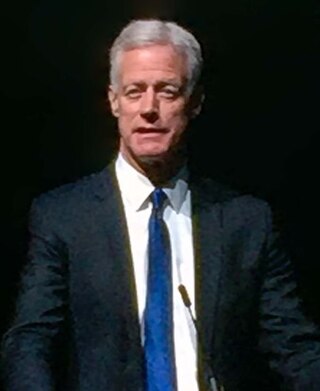
Kevin J Worthen is an American professor who served as the 13th president of Brigham Young University (BYU) from 2014 to 2023. From 2010 to 2021, he also served as an area seventy in The Church of Jesus Christ of Latter-day Saints. Worthen served previously at BYU as the Advancement Vice President and as dean of the J. Reuben Clark Law School (JRCL).

The Brigham Young University (BYU) College of Fine Arts and Communications (CFAC) is one of the nine colleges at the university, a private institution operated by the Church of Jesus Christ of Latter-day Saints and located in Provo, Utah. Founded in 1925, the college has grown from a small college of the arts with minimal faculty and only 100 students to the second largest college on campus.
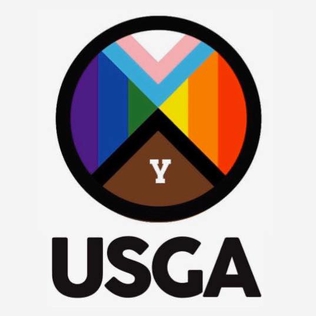
USGA is an organization for LGBTQ Brigham Young University students and their allies. It began meeting on BYU campus in 2010 to discuss issues relating to homosexuality and The Church of Jesus Christ of Latter-day Saints. However, by December 2012, USGA began meeting off campus at the Provo City Library and is still banned from meeting on campus as of 2018. BYU campus currently offers no official LGBT-specific resources as of 2016. The group maintains political neutrality and upholds BYU's Honor Code. It also asks all participants to be respectful of BYU and the LDS Church. The group received national attention when it released its 2012 "It Gets Better" video. The group also released a suicide prevention message in 2013. A sister organization USGA Rexburg serves the LGBT Brigham Young University–Idaho student community in Rexburg, Idaho.
Students identifying as LGBTQIA+ have a long, documented history at Brigham Young University (BYU), and have experienced a range of treatment by other students and school administrators over the decades. Large surveys of over 7,000 BYU students in 2020 and 2017 found that over 13% had marked their sexual orientation as something other than "strictly heterosexual", while the other survey showed that .2% had reported their gender identity as transgender or something other than cisgender male or female. BYU is the largest religious university in North America and is the flagship institution of the educational system of the Church of Jesus Christ of Latter-day Saints —Mormonism's largest denomination.
The Seventh East Press (7EP) was an American student newspaper at Brigham Young University (BYU) in Utah that published 29 issues from October 6, 1981, to April 1, 1983. Its peak was 4,000 copies. The newspaper was banned from being sold on campus in February 1983 after publishing an interview with Sterling M. McMurrin, a former institute teacher of the Church of Jesus Christ of Latter-day Saints who stated that he never literally believed in the Book of Mormon. Afterwards, the 7EP's sales notably decreased, and it ceased publication later that year. Several contributors had their faithfulness questioned by their local leadership at the request of LDS Church leader Mark E. Petersen.
Below is a timeline of major events, media, and people at the intersection of LGBT topics and Brigham Young University (BYU). BYU is the largest university of the Church of Jesus Christ of Latter-day Saints. Before 1959 there was little explicit mention of homosexuality by BYU administration.










